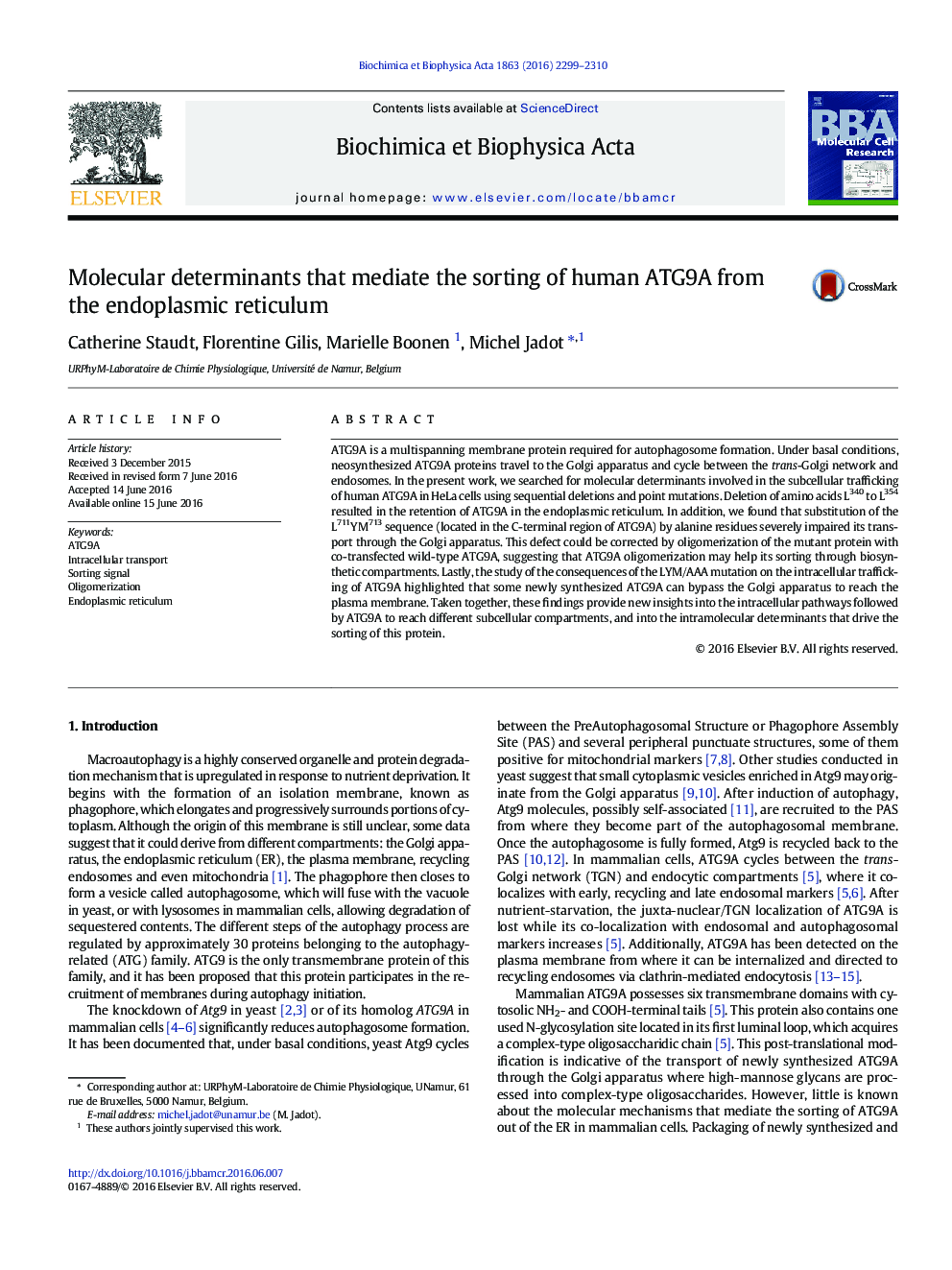| Article ID | Journal | Published Year | Pages | File Type |
|---|---|---|---|---|
| 1950423 | Biochimica et Biophysica Acta (BBA) - Molecular Cell Research | 2016 | 12 Pages |
•A L711YM713 sequence is required for ATG9A transport through the Golgi.•Oligomerization of ATG9A helps its transport through biosynthetic compartments.•Newly synthesized ATG9A can travel to the plasma membrane by an atypical route.
ATG9A is a multispanning membrane protein required for autophagosome formation. Under basal conditions, neosynthesized ATG9A proteins travel to the Golgi apparatus and cycle between the trans-Golgi network and endosomes. In the present work, we searched for molecular determinants involved in the subcellular trafficking of human ATG9A in HeLa cells using sequential deletions and point mutations. Deletion of amino acids L340 to L354 resulted in the retention of ATG9A in the endoplasmic reticulum. In addition, we found that substitution of the L711YM713 sequence (located in the C-terminal region of ATG9A) by alanine residues severely impaired its transport through the Golgi apparatus. This defect could be corrected by oligomerization of the mutant protein with co-transfected wild-type ATG9A, suggesting that ATG9A oligomerization may help its sorting through biosynthetic compartments. Lastly, the study of the consequences of the LYM/AAA mutation on the intracellular trafficking of ATG9A highlighted that some newly synthesized ATG9A can bypass the Golgi apparatus to reach the plasma membrane. Taken together, these findings provide new insights into the intracellular pathways followed by ATG9A to reach different subcellular compartments, and into the intramolecular determinants that drive the sorting of this protein.
